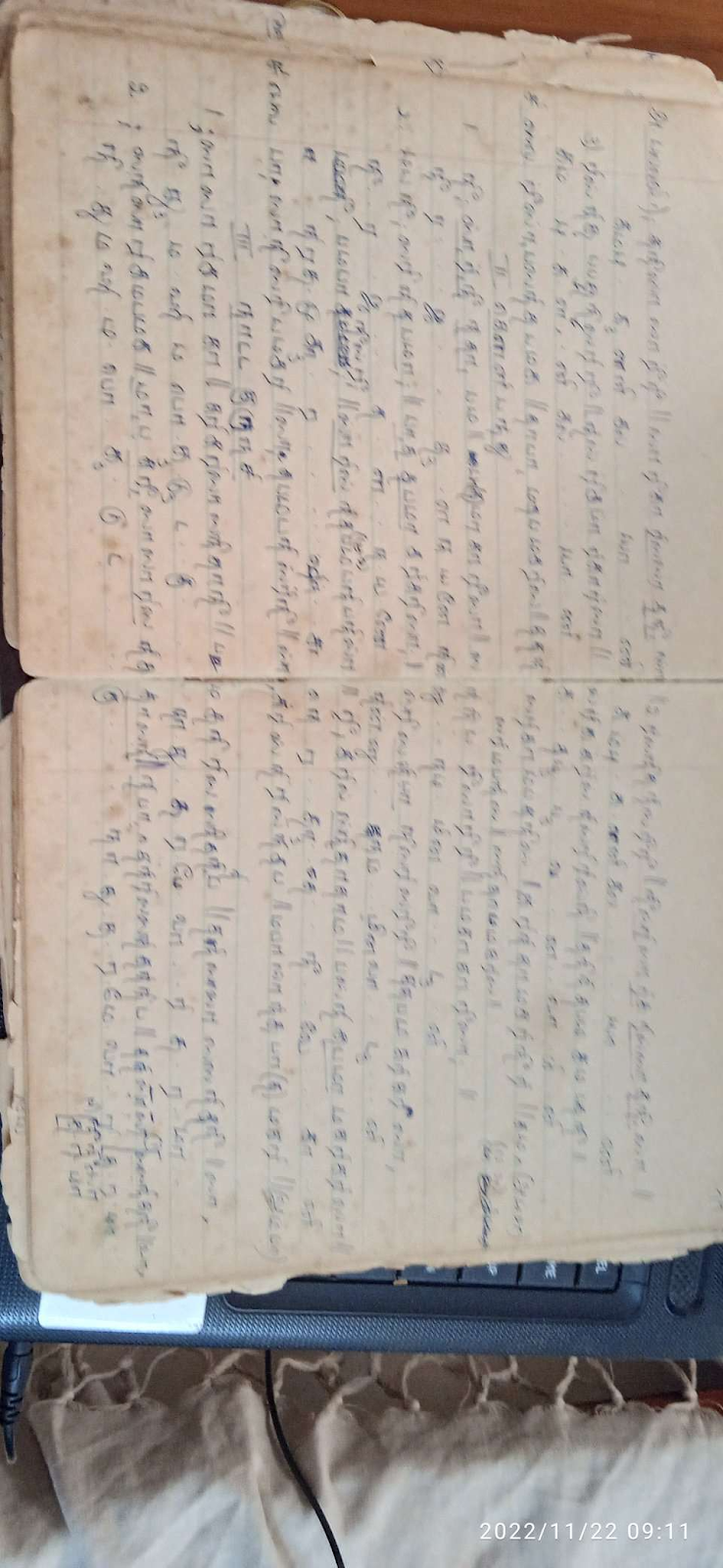https://sathvishayam.wordpress.com/2019/08/08/kamalamba-navavarana/2, Second Avarana – Shodasha dala padma
Kamalambaam Bhajare Re Maanasa –Kalyani- Adi.
[The avarana is Shodasa Dala, and the Chakra is Sarva asha paripuraka chakra ‘fulfiller all desires and expectations’; the yogini is Gupta Yogini; Mudra is Sarva Vidravini; the Siddhi is Laghima; and the mental state is Swapna, The presiding deity is Tripureshi. Her vidya is Aim Klim Sauh. The gem is sapphire. The time is three hours. The Shaktis are the sixteen starting with Kamakarshini.16 is the dominant number. This avarana corresponds to the Savdhistana chakra of the mother goddess.]
Sarvaashaa Paripuraka Chakra Svaamineem Parama Shiva Kaamineem
Durvaasaarcchita Gupta Yogineem Dukha Dhvamsineem Hamsineem
Nirvaana Nija Sukha Pradaayineem Nityakalyaaneem Kaatyaayaneem
Sharvaaneem Madhupa Vijaya Venim Sad Guruguha Jananeem Niranjaneem
Garvita Bhandaasura Bhanjaneem Kaamaa Karshanyaadi Ranjaneem
Nirvishesha Chaitanya Roopineem Urvee Tatvaadi Svaroopineem
The sixteen petaled lotus(shodasha dala padma) called sarva asha paripuraka chakra , the fulfiller of all desires , is the second enclosure. In the sixteen petals , the sixteen vowels of Sanskrit alphabet is inscribed.These symbolize sixteen kalas or aspects or phases.This Avarana is about the self protection of the devotee (atma raksha); and liberation from discontent by seeking identity with Shiva the ever complete and content.
He calls upon his mind to meditate on Kamalamba and cast aside attachments to illusory existence (kalpita maaya) .The craving Asha springs from discontent; and is quenched when discontent is eliminated. That is possible when devotee identifies himself with Shiva, ever complete and ever content.
He worships the presiding deity of Sarvasaparipuraka chakra, the fulfiller of all desires and expectations (Dukha Dhvamsineem); the beloved of Parama Shiva; the bestower of true and everlasting bliss (Nirvaana Nija Sukha Pradaayineem). She is the manifestation of attribute_ less supreme spirit (Nirvishesha Chaitanya Roopineem). She is also the representation of the world and its principles (Urvee Tatvaadi Svaroopineem).
When he calls her “she who is worshipped by Durvasa (Durvaasaarcchita)”, he is referring to the Kaadi matha tradition to which he belonged. The sage Durvasa is one of the gurus of the Kaadi matha.
Dikshitar also refers to the Gupta Yogini, the yogini of this avarana; the sixteen, Shakthis starting with Kamakarshini (Kaamaa Karshanyaadi Ranjaneem). They are also called nithyas and named Kamakarshini (fascinating the desires), Budhyakarshini (fascinating the intellect) etc. They relate to powers in the Five Elements, the ten senses of perception or Indriyas (being further divided into five organs of action and five sense organs) and the Mind.
The phrase Nija Sukha Pradaayineem Nityakalyaaneem refers to the sixteen Devis of this avarana, called Nitya Kala or Nitya Devis.
Raga mudra is in the phrase Nityakalyaneem; and his signature is in Guruguha -jananeem
Kamalamba, in ragam Kalyani, is the 2nd Avaranam of Sri. Muthuswam Dikshithar's Navavarna Kritis. The Chittaswaram here is the same from forward and also from backward. This is the only Navavarna which has Chittaswaram.
sarigamadhani rigapadhamadha niga×sa×ri×|
niri×ga×nisa×niri×sa×|ni,nidha,dhapa,||
pa,dhadha,nini,sa×ri×nisa×niga×ri×ni
ri×sa×ganidha madhapa | ga×ri×nidha magarisa||
സരിഗമധനി രിഗപധമധ നിഗസരി|
നിരിഗനിസനിരിസ|നി,നിധ,ധപ,||
പ,ധധ,നിനി,സരിനിസനിഗരിനി
രിസഗനിധ മധപ | ഗരിനിധ മഗരിസ||
sarigamadhani rigapadhamadha nigaWsaWriW|
niriWgaWnisaWniriWsaW|ni,nidha,dhapa,||
pa,dhadha,nini,saWriWnisaWnigaWriWni
riWsaWganidha madhapa | gaWriWnidha magarisa||
sarigamadhani rigapadhamadha niga×sa×ri×|
niri×ga×nisa×niri×sa×|ni,nidha,dhapa,||
pa,dhadha,nini,sa×ri×nisa×niga×ri×ni
ri×sa×ganidha madhapa | ga×ri×nidha magarisa||
Kamalambam Bhajare Re Maanasa (Avarana 2 of Navavarna Krithis)
Ragam: Kalyani (65th melakartha)
ARO: S R2 G3 M2 P D2 N3 S ||
AVA: S N3 D2 P M2 G3 R2 S ||
Talam: Adi (2 kalai)
Composer: Muthuswami Dikshitar
Version: Bombay Sisters
Pallavi
Kamalaambaam Bhajare Re Maanasa Kalpita Maayaa Kaaryam Tyajare
Anupallavi:
Kamalaavaani Sevita Paarshvaam Kambujaya Greevaam Nata Devaam
Kamalaapura Sadanaam Mrudu Gadanaam Kamaneeya Radanaam Kamala Vadanaam
Charanam:
Sarvaashaa Paripuraka Chakra Svaamineem Parama Shiva Kaamineem
Durvaasaarcchita Gupta Yogineem Dukha Dhvamsineem Hamsineem
Nirvaana Nija Sukha Pradaayineem Nityakalyaaneem Kaatyaayaneem
Sharvaaneem Madhupa Vijaya Venim Sad Guruguha Jananeem Niranjaneem
Garvita Bhandaasura Bhanjaneem Kaamaa Karshanyaadi Ranjaneem
Nirvishesha Chaitanya Roopineem Urvee Tatvaadi Svaroopineem
Meaning (From Todd Mc Comb's web page: http://www.medieval.org/music/world/carnatic/lyrics/srao/kamala.html):
Oh ("re") mind ("manasa"), worship ("bhajare") goddess Kamalamba, and cast aside ("tyajare") attachment to this illusory ("kalpita maaya") world ("kaaryam").
She is ("paarshvaam") attended ("sevitha") on by Lakshmi ("kamala") and Sarasvati ("vaani").
The beauty of Her neck ("greevam") surpasses ("jaya") that of the conch ("kambu").
She is worshiped ("nata") by the celestials ("devaam") and resides ("sadanaam") at Kamalapura.
She speaks ("gadanaam") softly ("mrudu") and has beautiful ("kamaneeya") teeth ("radanaam").
She possesses a lotus-like ("kamala") face ("vadanaam").
She is the presiding deity ("svamineem") of Sarvasha Paripuraka Chakra and is the beloved ("kamineem") of Paramashiva.
She is the mystic ("gupta") Yogini, worshiped ("archita") by the sage Durvasa.
She annihilates ("dhvamsineem") miseries ("dukha"). She is Hamsini, the supreme one in the company of great sages.
She is the bestower ("pra-daayineem") of true ("nija") bliss ("sukha")through salvation ("nirvaana"). She is the ever ("nitya") auspicious ("kalyaanim") one.
She is also known as Katyayani and Sharvani.
Her dark tresses ("veni") exceed ("vijaya") the dark hue of a swarm of bees ("madhupa").
She is the mother ("jananeem") of noble Guruguha and is blemishless ("niranjaneem").
She destroyed ("bhanjaneem") the arrogant ("garvita") Bhandasura.
She delights ("ranjaneem") Shaktis such as ("aadi") Kamakarshani.
She is the attributeless ("nir-vishesha") supreme ("chaitanya") spirit ("roopineem") and is the form ("swaroopineem") of the world ("urvee tatvaadi").
Notes from Sri Dikshita Kirtana Mala by Sri. A. Sundaram Iyer:
2nd Avarana Keertanam:
a. This avaranam is the Sarvasha pari-pooraka charka. According to advaita, the world is all delusion. Brahman alone is real.
b. By reciting this mantra, one shall achieve
i. The entire mercy of Sri Lalita Mahatripurasundari
ii. The entire satisfaction of all desires
iii. All auspicious things
iv. Ambal’s protection.
(2) The second Avaranam is Shodasa Dalam, and the Chakram is Sarvasaparipuraka chakra, ‘fulfills all expectations’; The yogini is Gupta Yogini. The mental state is Swapna, the Chakra Iswari is Tripurasi and the Saktis are the sixteen starting with Kamakarshini. [KALYANI: Kamalambam Bhajare]
[more notes at the end of the notations…]











